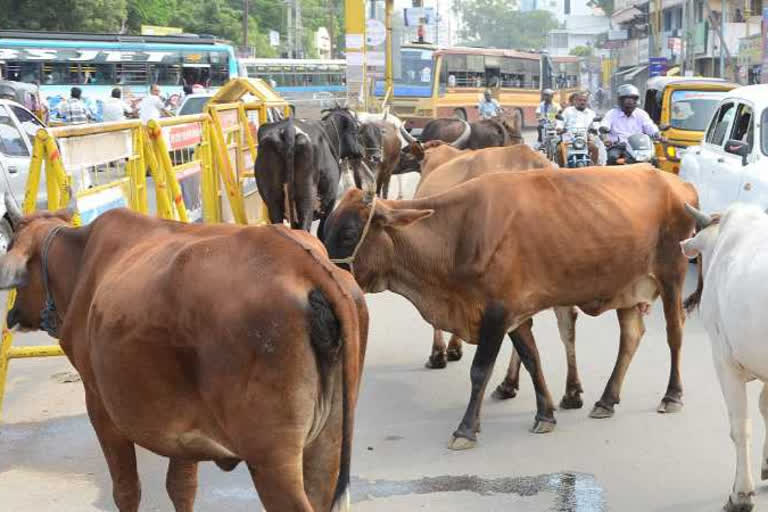If cows emerged as the major campaign theme ahead of Sunday's poll for 61 seats across 12 Uttar Pradesh districts in the fifth phase, the reasons are not far to find. Eastern UP where the six and seventh phases of the poll are scheduled, is among the most poverty-stricken and backward of the country's areas, with a landholding of a mere 600 square metres per person against the national average of 1.1 hectares. For voters in the fifth, sixth and seventh phase, who mostly own small and scattered plots, the menace from stray cattle remains an issue of predominant and critical concern.
In keeping with the earlier phases, the voting percentage for the fifth phase--encompassing 12 districts across Ayodhya, Amethi, Chitrakoot, Rae Bareli and Shravasti--remained at a modest 55 per cent. The "beneficiary factor" (of providing direct monetary benefits to the poor) was also likely to have a bigger resonance in this underdeveloped region. But, the question hangs: Has the BJP in the fifth phase been able to compensate for its perceived losses of the earlier phases?
Also read: UP Assembly elections: Will Lord Ram help BJP do an encore in the fifth phase?
What has changed since 2017
In the previous 2017 elections, the BJP together with alliance partner Apna Dal had won 50 of the region's 61 seats while the Samajwadi Party had been wiped out and the Bahujan Samaj Party had won in only three seats. Yadavs and Muslims are considered core supporters of the SP, but do not constitute a huge chunk of voters with the non-Yadav OBC such as the Kurmis and Keoris existing in big numbers.
Scheduled Castes make up for 22.5 per cent of the electorate in the region, but these communities are divided between the Jatav voters (comprising BSP chief Mayawati's loyal vote bank) and other backward communities, including the Pasis, Dhobis and the Koris. In the previous elections, the BJP had been able to string together a rainbow coalition of non-Yadav OBCs and non-Jatav Scheduled Castes. Sections of Pasi and Maurya voters are reported to have moved away from the BJP, while OBC castes, including the Kurmis, are also said to be disenchanted with the saffron party because of what is perceived as Chief Minister Yogi Adityanath's preference on promoting the Rajput community.
Sections of Backward and OBC voters are said to be disenchanted with the BJP for multiple reasons. These include the grievance that the Central government has "diluted" the reservation policy by including the Economically Weaker Sections in the category. Ground reports also suggest that sections of OBCs and Dalits have drifted away from the party because persons belonging to these communities are said to have been the targets of what is called the UP government's "thoko niti" (encounter policy).
Also read: Uttar Pradesh Assembly Polls: Muslims veer more towards Samajwadi Party
